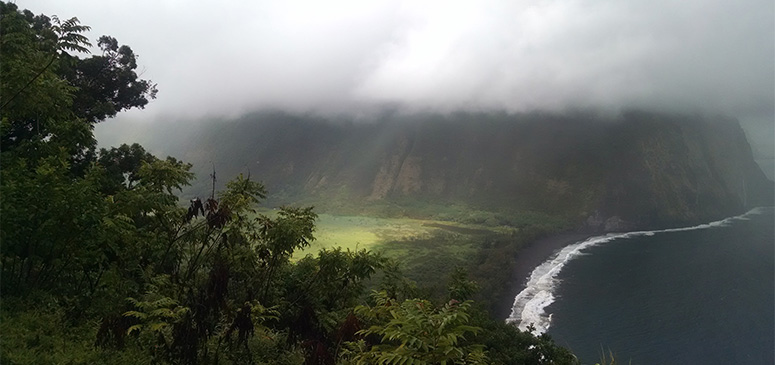The State of Hawaii has seen an increase in flash floods and sea level rising over the past decade. The threat of rising water levels and the potential of frequent or even yearly flooding calls for immediate action from everyone. Not only does flooding pose a risk to Hawaii’s community, but it also highlights the issues of pollution of Hawaii’s waterways.
When flooding occurs, stormwater runoff flows to the nearest natural water source. In Hawaii, this means storm water could flow directly into our streams and the ocean. This is a major problem for Hawaii’s waterways because it can harm a variety of rare and endangered ecosystems, especially if the runoff contains contaminants such as chemicals, oil, litter and trash, and any other unnatural product. To assist Hawaii’s natural waterways and protect marine life, we encourage you to take flooding precautions. Here are a few simple tips to keep you and your family safe, while also protecting Hawaii’s natural resources.
- Have an emergency kit ready: Be prepared to evacuate at a moment’s notice. Flash floods can come quickly and be rather intense for coastal areas. Have an emergency kit with clothing, flashlights, identification, cash, hand sanitizer and facemasks, non-perishable food items, and bottled water for all household members at the ready.
- Keep away from floodwaters: Floodwaters collect contaminants and can carry oil, chemicals, and other hazardous pollutants that may aggravate skin on contact. If you are driving and floodwaters begin to rise, turn around, as vehicles can be swept away in as little as two feet of heavy flowing water. Vehicles can contribute high amounts of pollutants to floodwaters, especially when submerged, so it’s best not to travel if possible.
- Properly store potential pollutants: If you have a garage, keep your garage doors shut to prevent excess dirt, oil, or chemicals from flushing out. Keep all chemicals and oils in an airtight, waterproof container to prevent additional spread or leakage during flooding. This not only helps protect you and your loved ones during a flood but also decreases littering and pollution in the future.
- Tie up loose items: Most people overlook common yard items when it comes to preparing for flooding. While it is important to board up and protect your home, it is just as important to tie up or put away loose items, such as lawn furniture, hoses, décor, unused pots, and trash bins. These items may float away in a flood and contribute to litter in nearby water ways.
- Take precautions post-flood: After a flood, be sure to watch out for electric lines, large oil spills, broken glass, or other harmful factors in nearby waters.
Sources:
- https://hidot.hawaii.gov/stormwater/storm-water-management/
- https://www.stormwaterhawaii.com/about/storm-drain-system/
- https://honolulu-cchnl.opendata.arcgis.com/datasets/b040fe5c7fd64c9c8a3fffbd02798637_3?geometry=-158.934%2C21.255%2C-156.955%2C21.702
- https://www.hawaiipacifichealth.org/healthier-hawaii/safety-corner/10-tips-to-keep-you-afloat-during-a-flash-flood/
- https://www.weather.gov/safety/flood-states-hi
- https://www.travelandleisure.com/travel-tips/weather/hawaii-declares-state-of-emergency-flooding

